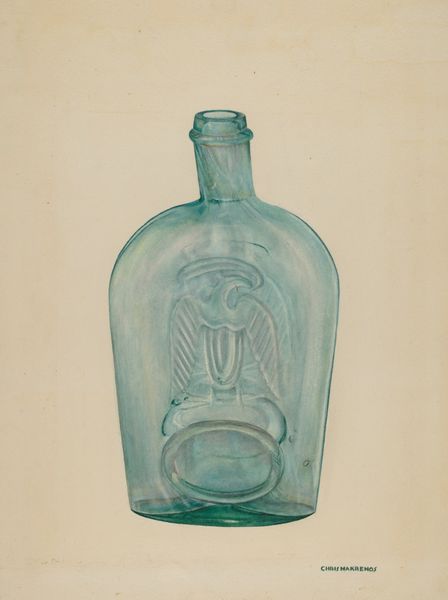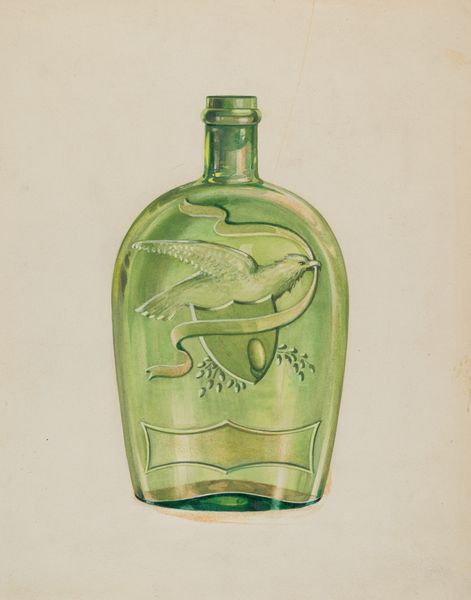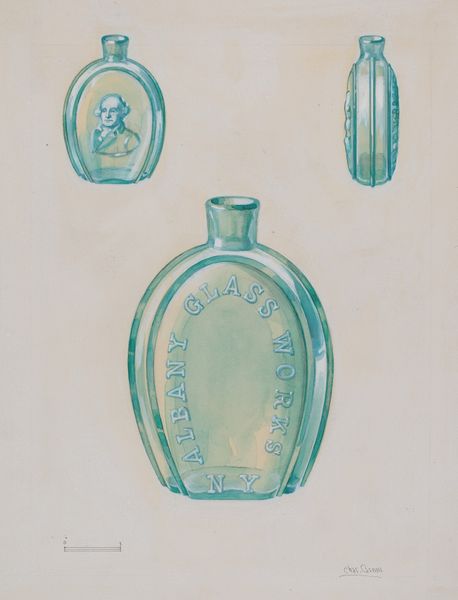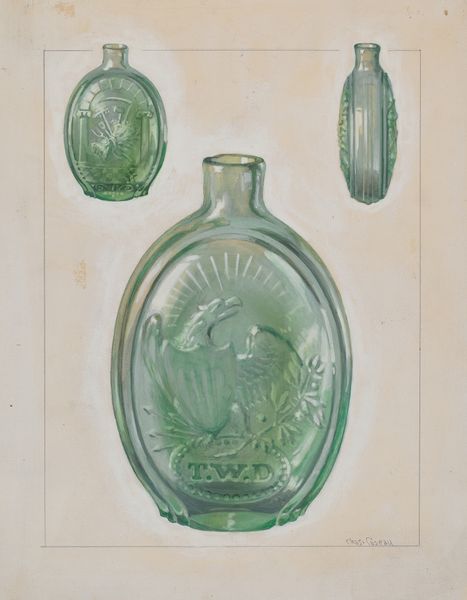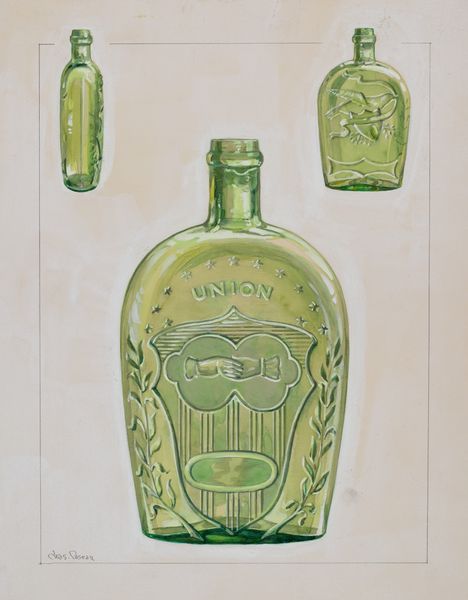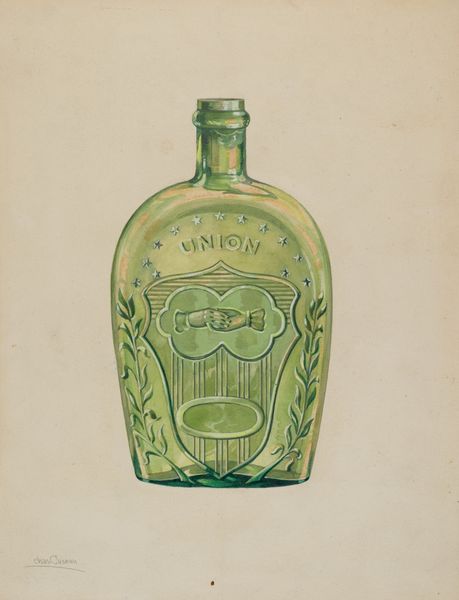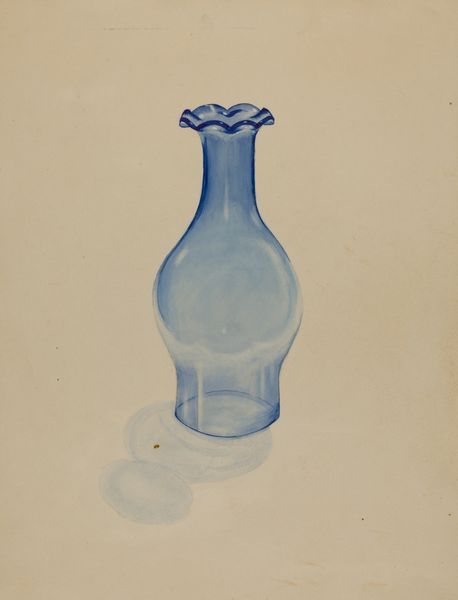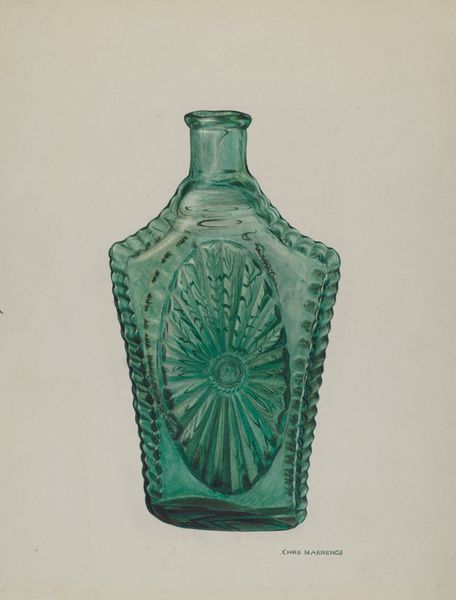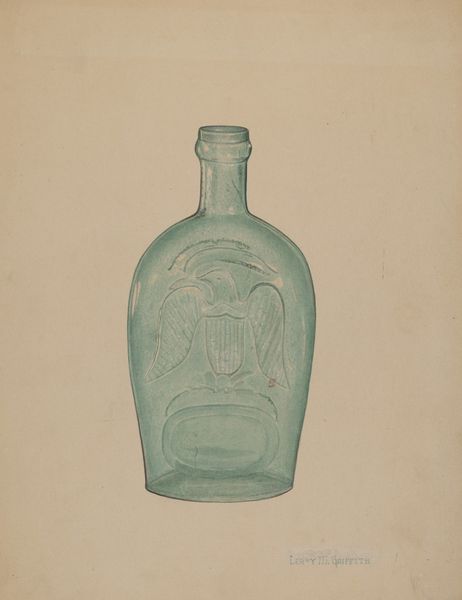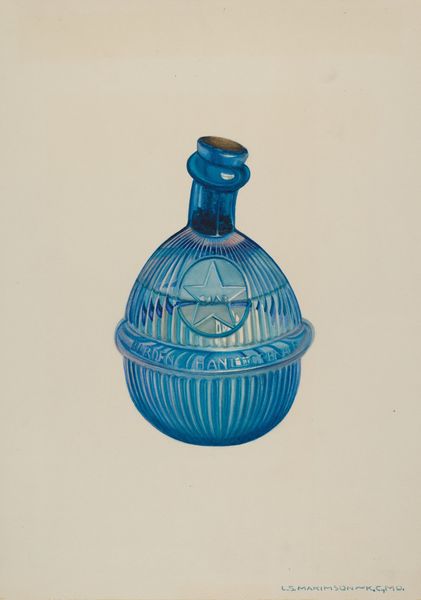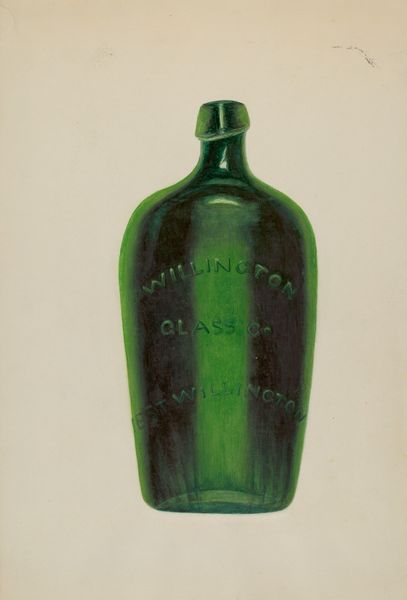
drawing, glass, watercolor
#
drawing
#
glass
#
watercolor
#
watercolour illustration
#
watercolor
Dimensions: overall: 29 x 22.9 cm (11 7/16 x 9 in.)
Copyright: National Gallery of Art: CC0 1.0
Curator: Here we have Charles Caseau's "Flask," a watercolor drawing likely made around 1936. Editor: It's unexpectedly tranquil. That soft, almost muted teal… it's both calming and evocative of Depression-era designs. The use of watercolor lends it a delicate, preliminary feel. Curator: Indeed. Beyond its aesthetic qualities, this piece prompts us to consider the labor involved in producing designs for mass consumption. The subtle lines indicating its potential fluted design… This was intended for industrial production, a blueprint of sorts. Notice the "Louisville, KY" marking – suggestive of specific factories, perhaps a glassworks aiming for regional markets. Editor: The "Louisville, KY" directs us, certainly, but let’s observe this avian emblem. It's almost heraldic. What could these abstracted birds represent within the visual culture of that time and place? Are they specific to Louisville, markers of local identity, or a more generic symbol of prosperity people identified with at the time? The image reminds me of a sort of manufactured mythology. Curator: Interesting perspective. The fluting is also something to consider from a design standpoint. The parallel lines of the fluting, though ornamental, were likely functional as well; influencing both grip and glass distribution. Were cost-effectiveness and design functionality in agreement with popular design at this moment in history? I see here an intersection between utility and artistry dictated by manufacture and market demands. Editor: And these repeated motifs give shape to our perceptions as well. Doesn’t it subtly echo the hope for stability and continuity, even amidst economic hardship? A desire literally molded into glass, a hope reflected on an emblem of Kentucky, for instance, its heritage. Curator: So we're both drawing inferences from the object, looking to both its tangible form and symbolic significance. One lens trained toward material circumstance, the other to encoded meanings. Editor: Precisely. What appears simply to be a rendering of a commercial object reveals far richer details on how identity and production intersected within material design.
Comments
No comments
Be the first to comment and join the conversation on the ultimate creative platform.
